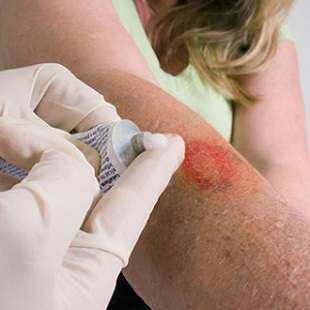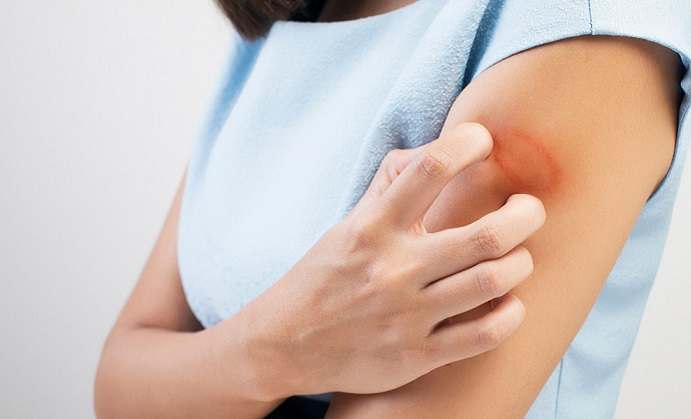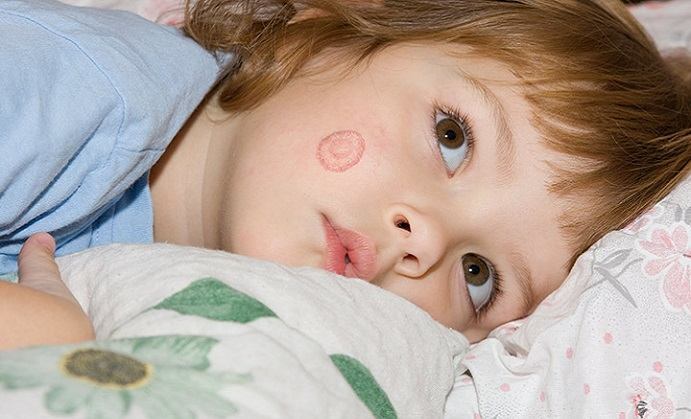Dermatophytosis, also known as Ringworm, is a common issue nowadays that affects hundreds and even thousands of people every year. Since some of the most common symptoms include small infections on the skin, hair or nails, they can often times go unnoticed. This is the reason why most of these infections eventually develop complications. Here is a short list of the developments that can arise in these situations.
Bacterial infections
 It is common knowledge that the human skin is covered with potentially pathogenic bacteria, including Streptococcus and Staphylococcus. These microorganisms rarely have the opportunity to develop infections, especially when the individual is completely healthy and has no rashes or tears in the skin. However, when these occur, they can turn into bacterial ports of entry. Therefore, a germ which would otherwise go unnoticed now has the potential to reproduce and start an infection. This exact circumstance may occur in the case of a ringworm infection as small tears usually show up in the compromised areas. Although the terminology of a Staph or Strep skin infection may be quite complex, it is usually called cellulitis.
It is common knowledge that the human skin is covered with potentially pathogenic bacteria, including Streptococcus and Staphylococcus. These microorganisms rarely have the opportunity to develop infections, especially when the individual is completely healthy and has no rashes or tears in the skin. However, when these occur, they can turn into bacterial ports of entry. Therefore, a germ which would otherwise go unnoticed now has the potential to reproduce and start an infection. This exact circumstance may occur in the case of a ringworm infection as small tears usually show up in the compromised areas. Although the terminology of a Staph or Strep skin infection may be quite complex, it is usually called cellulitis.
According to some studies, symptoms of cellulitis include anything from pain and fatigue to fever. Left untreated, a Staph or Strep complication can turn into gangrene or meningitis.
Nail deformity
Healthy skin is covered by Dermatophytes and the only way the fungus can get inside and cause a problem is by taking advantage of a poor immune system and a local lesion. If the opportunity comes up, Dermatophytes will infect the nails and the nail bed. According to the Merck Manual, around 10% of all people will, at some point in their lives, develop a nail infection with Dermatophytes. Symptoms include crumbling, scaling, and discoloration. Fortunately, in the case of hand nails, the problem is easy to discover. However, toenail fungus is relatively hard to manage, as it often goes undiscovered.
Hair loss
 Since ringworm affects human skin, in general, regardless of the body area, it may just as well affect the scalp. When the infection is located at this level, it has the name of “tinea capitis”. One of the most frequently met symptoms of “tinea capitis” is a rash on the scalp that is both round and red. The area can be removed and pulled out from the surface of the skin.
Since ringworm affects human skin, in general, regardless of the body area, it may just as well affect the scalp. When the infection is located at this level, it has the name of “tinea capitis”. One of the most frequently met symptoms of “tinea capitis” is a rash on the scalp that is both round and red. The area can be removed and pulled out from the surface of the skin.
A typical way of getting a scalp ringworm infection is by sharing a hairbrush. This is the reason why children and girls, in particular, are extremely prone to contagion.
Kerion
Kerion is one of the complications of scalp ringworm infections. In this case, the fungi go deeper in the skin and manage to penetrate the subcutaneous tissue. This will result in a sponge-like aspect of the affected area. Inflammation and pimples can also be detected at the spot. When the condition progresses a kerion might erupt and so the individual can see pus draining from the affected site. Unfortunately, one of the results is permanent hair loss. Therefore, individuals suffering from “tinea capitis” are advised to analyze the surface of their scalp as often as possible, in order to detect whether Kerion shows up or not.
Do you want to find an effective Ringworm treatment? Check out our top rated Ringworm products











